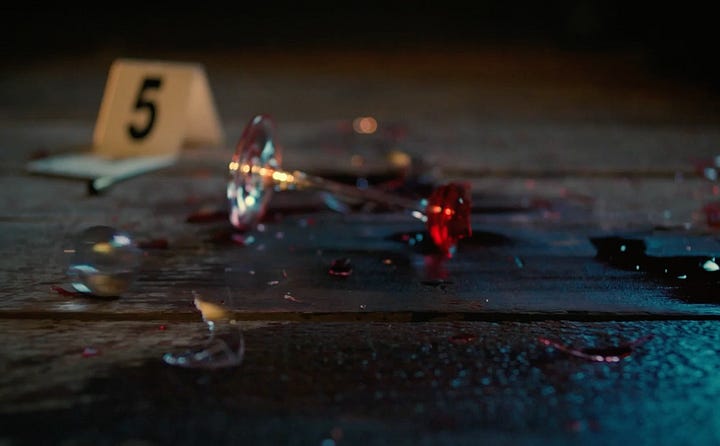Art of the Title Sequence: ELEMENTARY
from crafting an inventor's dream to to tipping the deerstalker to other Holmes detectives
Elementary‘s title sequence presents us with a Rube Goldberg machine, something at once both straightforward and convoluted.
A glass marble is the throughline; it begins the motion, triggers most of the machine’s pieces, rolls past the broken glass and wine/blood soaked boards, highlights Lee’s name as it rolls over it, and finally ends the sequence expanding towards the camera/viewer until we see New York reflected in it.
This last shot suggests the marbles encapsulates the city and finally tying back into the original, discarded brief (more on that below), while hinting at the idea the city is a universe in a snowglobe.


It’s a fitting sequence for a show which appears simple on the surface, but slowly develops to be more complex, both technically and emotionally.
Like Elementary’s mysteries, the machinations are not presented with clear chronological cause-and-effect, but we’re familiar with the pieces: mouse wheel, rising bell, pulleys; clues and questioning, murders and lying, cops and criminals; evidence numbers, women shattering, a figure trapped in a cage; etc.
The machine’s props includes potential elements of crimes and crime scenes (glass breaking, ropes, evidence markers) and potential weapons (gun, hammer, scissors), and even gears which look like film reels.
It’s mostly in close- or medium- shots with a very shallow depth of field; the speed at which the marble moves and the focus following it keeps us slightly discombobulated.


A great interview about how it was made — including taking a risk with the concept in general — is here.
There were already storyboards that communicated what the client had asked for. It would have been a waste of time to design something of the same ilk, so I decided to design something that did not adhere to the brief… and see what happens.
I wanted to communicate how Sherlock Holmes’ mind works in the non-traditional sense of detective work. [I wanted to] playfully represent one thing leading to another — a chain reaction, scenarios becoming the catalyst for something else to happen. In the pilot episode, Holmes found the location of a hidden dead body by using a marble to identify a misalignment in the floor. This stood out to me as a summation of his technique of using mundane objects to simplify a complex situation. I wanted to make the marble the hero of the sequence and this led me to the work of Rube Goldberg […]”


The whole thing is brown and yellow with hints of red, glassy blue, and gunmetal, the general colour palette of a police procedural — which Elementary technically is not, but in which tropes it trades.
My favourite part is how it cheekily pays homage to The Great Mouse Detective; from Simon Clowes to Basil of Baker Street to Sherlock Holmes, this title sequence is game recognises game recognises game.
A good title sequence isn’t just pretty and ideally within the ‘house style,’ it tells you what a show is about and how it’s about it. Elementary does all that in thirty seconds.
We raise (and smash) a glass to that.





